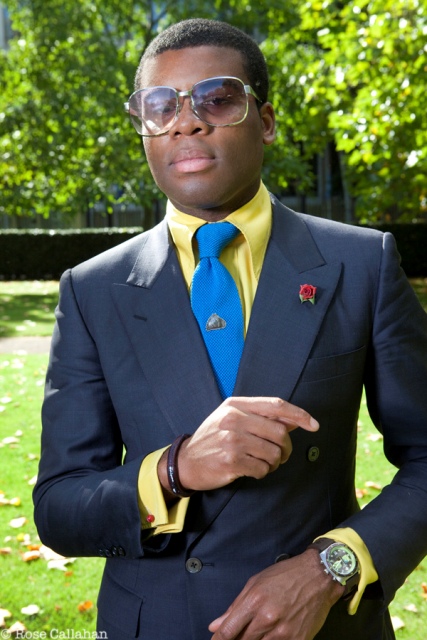Marion: Are you trying to get me tight?
Robert: You're frightening enough sober.
Recently, I had the pleasure of attending the private viewing for starshooter Terry O'Neill's 'Guys and Dolls' retrospective at Chelsea's Little Black Gallery, whereupon I inadvertently managed to position myself in the hinterland between knowledgeable and know-it-all; a stance that comes as no great revelation to the semi-regular readers of this column, I'm certain
Take this excellent shot of enduring - give or take an early death - actors Goldie Hawn and Peter Sellers in 1970. Observe the unstudied, spontaneous nature of it that loudly proclaims "Paparazzi Surprise!" as the two stars prepare to adjust to all seeing eyes of the media hounds who sniffed out a liaison in the sun and pounced upon their return. One might wonder, though, as to whether these two were ever involved, particularly as this was roughly around the time that Sellers became involved with Miranda Quarry, whom he married that year. Is this where the construct starts to fall apart?
In actual fact, it falls apart if one has seen the film. The snappers might not be acting, but the luminaries certainly are, for this is more or less a still from the third act of Roy Boulting's There's A Girl In My Soup. And yes, that revelation did spoil it for at least one person that night. That's verisimilitude for you
And that person might derive even less cheer from seeing the film, itself adapted by Terence Frisby from his own play; to some, it's a cute, stylish little document of the rigid, punctilious yet surreptitiously naughty mores of the gilded class rubbing up against those of the brazen, hedonistic, everything-is-permissible ones of the hippies; to others, it is overly focused on a self-involved, amoral sybarite whose only concerns are hardwired to his genitals and the out-of-town girl who eventually has him eating out of her hand simply because she deconstructs his seduction routine to the hackneyed wealthy lothario tricks it comprises. Naturally, I rather like it
Dressed peculiarly and exclusively by Mr. Fish of Clifford Street, Sellers's Robert Danvers is the archetypal selfish shagger who discarded with bedposts long ago due to the damage done from adding the notches. I suspect that his "Hairy Chested Love God" (as Grant Morrison memorably describes the 1970s incarnation of Bruce Wayne/Batman) has no small measure of influence on fellow fictional Peacock Austin Powers; indeed, he comes equipped with a devil may care-attitude, an almost irrepressible belief in his own virility and a catchphrase that the swingers of the '60s cannot help falling for - "My God! but you're lovely," as is uttered practically every time he meets a woman, before, during and after game time. Hell, when we first meet this almost irritatingly charismatic "rotter," he attends the wedding of an old lover to seduce the bride one last time and takes a fetching upperclasswoman home as a palate cleanser, playing the cookery show that has secured his in-story fame and excesses on his television as a background boost to his ego
What does a writer do with the tale of a fashionably attired, Bolly-swigging pure pleasure seeker who lives only for the delights of women, Rolls Royces and gastronomic consumables? Why, one introduces a little anarchy into his decadent little heart. Enter Goldie Hawn's Marion, the perfect Ossie Clarke-clad hellcat for a catalysing touch of the old chaos and disorder
What is interesting is that rather than have Danvers spend much of the narrative vaingloriously striving to make Marion his, the relationship that forms between them begins rather quickly, but in essence is mostly on her own terms. Belying their wide age difference, she deflects his aforementioned tricks rather easily, only to move herself into his luxurious London flat, direct him to drive her back to the squalid basement where he first spotted her, argue awkwardly with her self-involved, unreconstructed boyfriend and have Danvers flail around with her heavy suitcase as he tries to avoid despoiling his expensive finery. She spends most of her time during the wine tasting trip to France she accompanies him on embarrassingly inebriated and yet able to bed or make a fool of him on a speedy whim. No wonder he does the obvious and begins to fall for her - it's practically a text for "How to Keep a Man Forever 101"
But inevitably, the tale is a flawed one. The entertainment value of our protagonists is undermined by how unlikeably they behave, although Marion may come off worse, for whilst Danvers learns little about himself, Marion learns nothing at all, content to run with the values of free love and free living for however long she can, utilising her insight and intelligence for little more than manoeuvring the men in her life as she pleases. Which is a conclusion I'd rather not have drawn, for there are some fun moments watching the two trying to fit into each others worlds - that war of the mores again - and though clichéd a storytelling device, even in the late 20th century, what potential there was for such an odd couple to blend their worlds together is lost in the denouement, though I suppose there is a point to be made there as well. Had Frisby been more prescient, Marion's fate would likely have been rather unhappy, for it is more or less clear that Danvers will be fine, no matter what indignities come to him
The saving graces? Sellers's aforementioned charisma, Hawn's nascent, now time-honoured knockabout persona, the odd Mike D'Abo-written song - nothing that's a patch on 'Handbags and Gladrags,' sadly - and, oh, a veritable goldmine of Peacock Revolution style. All that, at least, gives segments of this production a decidedly delicious flavour

Some of these screen caps were filched from Precious Bodily Fluids. Andrew, I could not have done it without you




























